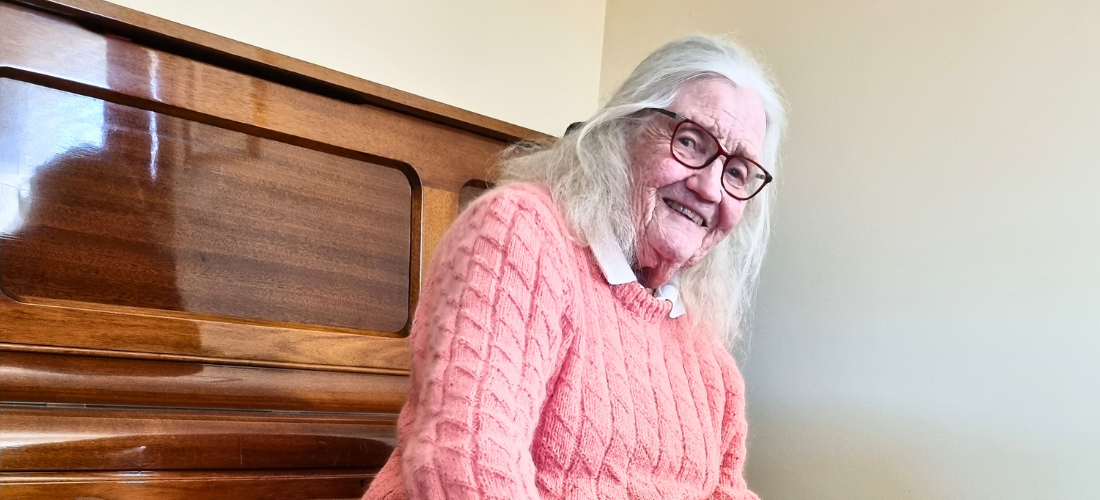Early detection key to maintaining quality of life
A White Paper issued today by the AMD Alliance International (AMDAI) shows that the impact of vision loss due to age-related macular degeneration (AMD) on patients’ quality of life and psychological well-being is comparable to that of cancer or coronary heart disease.1 The White Paper also shows that diagnosis of AMD and the threat of blindness increases depression and the risk of suicide.
As a result, the Macular Degeneration (MD) Foundation in Australia and beyondblue: the national depression initiative, have joined forces in an effort to highlight the significance of depression associated with macular degeneration. Leonie Young, CEO of beyondblue said, “The AMD White Paper highlights the high prevalence of depression amongst patients with AMD and vision loss.”
The MD Foundation is calling on all Governments, health policy makers, healthcare professionals and associated support agencies to take immediate action to combat the risks of depression, suicide and social isolation linked to the condition. According to the MD Foundation, macular degeneration is the leading cause of blindness in Australia and the dire consequences can be mitigated by early detection, diagnosis and access to care.
Leslie Lofthouse, Chairman of the MD Foundation in Australia says, “AMD is not just about vision loss. It’s also about mental health and quality of life, which is why identifying AMD in its earliest stages is critical. People, especially those over 50, must have regular eye examinations. Furthermore, health policy makers must acknowledge that quality of life is an important patient outcome and timely access to treatments and support services is critical to limit the impact of AMD.”
A recent audit undertaken by the MD Foundation found that access and affordability of support services varied widely across States in Australia. For example a pensioner living in Tasmania can receive a reimbursement of up to $275 on the retail value of hand held magnifiers while a pensioner living in Victoria receives no entitlement for this device. Hand held magnifiers are low vision aids that can facilitate daily tasks for people living with AMD.
“Access to treatments and support tools can enhance quality of life and improve independence for patients. A good life with AMD is very possible, with the right support at the right time,” said Lofthouse.
The White Paper, to be launched in conjunction with the 2006 AMD Awareness Week, September 18 to 24, 2006 also marks the start of a global outreach campaign to raise awareness of the little-known psychological effects of AMD. The campaign aims to demonstrate that basic support to improve AMD patients’ quality of life – early access to medical expertise, diagnosis, treatment and low vision programs, including counselling – is vital.
People with vision loss are more than three times more likely to experience depression compared to the general population. Undiagnosed and untreated depression is a high risk factor for suicide, which claims about 850,000 lives worldwide every year, according to the World Health Organization (WHO). Further studies included in the White Paper show that the inclusion of low-vision care services help to reduce the negative impact of the AMD diagnosis, help patients adjust to living with the disease and assist with improving quality of life for patients.
Paul Beaumont, Founding Director of the MD Foundation, believes that those suffering the side effects of MD are doing so in isolation. “Basically, MD is becoming an increasing issue amongst Australia’s baby boomer generation, and because there is such a low level of awareness in the community about the disease, it is causing damaging psychological and physical side effects. This is part of an international epidemic and I believe we cannot ignore the seriousness of this condition. It is imperative that younger generations take notice and start the proper preventative measures now, such as living a healthy lifestyle and seeking regular eye examinations.”
In addition to an increased risk of depression, the White Paper notes how AMD adversely affects day to day life. Patients are eight times more likely to have difficulties shopping, twelve times more likely to have problems using a telephone and nine times more likely to experience difficulties doing simple house work. Patients also have a higher risk of accidents such as hip fractures and many are unable to drive.
Suellen Tapsall, a Western Australia patient living with MD, says her diagnosis was totally unexpected and shocking. “To find out overnight that you’re going blind – and the doctors can’t tell you whether or not you’ll be able to see your children’s faces in even a month’s time is extremely upsetting. The thought that, at not even 40, I would lose my independence and, might have to learn new ways to do basic things like getting around, cooking and working was terrifying. Thankfully I have a great specialist and the treatment and support I receive have really made a difference in my adjustment to living with MD – so I’m more confident about my ability to cope emotionally.”‘
About AMD
AMD is a degenerative disease that affects the macula, located in the central part of the retina – the area responsible for central vision which allows us to read, drive and recognise faces. As central vision breaks down, only peripheral vision remains. There are two types of AMD: Wet and Dry. Dry AMD is the most common form of the disease, accounting for about 80 per cent of all cases. Dry AMD occurs when light-sensitive cells in the macula slowly break down. Approximately 10 to 20 per cent of cases will progress to wet AMD. Wet AMD occurs when abnormal blood vessels are formed under and leak into the macula. Blood vessel growth in Wet AMD progresses much more rapidly than the Dry form and accounts for the majority of cases in which severe vision loss occur.
AMD causes more than 14 million cases of visual impairment worldwide each year. AMD is even more prevalent among people who smoke. Evidence shows that smokers are four times more likely to develop AMD compared to those that have never smoked. The World Health Organisation recognises smoking as the only modifiable risk factor for AMD.
For more information on depression, anxiety and related disorders, available treatments and where to get help go to www.beyondblue.org.au or call the beyondblue info line – 1300 22 4636 (local call).
About the AMD Alliance
The AMD Alliance International is a global non-profit coalition of vision and seniors’ organisations working to raise awareness of age-related macular degeneration (AMD), the leading cause of vision loss in older populations. Members of the AMD Alliance International promote regular eye examinations and provide education about prevention, treatments, rehabilitation and support services available for people with AMD their families, friends and carers. Comprising of 48 organisations in over 20 countries, the AMD Alliance International is the only international organisation to date that concentrates exclusively on AMD.
The mission of the Alliance is “to bring knowledge, help and hope to individuals and families around the world affected by AMD through:
- Generating awareness and understanding of AMD;
- Promoting the importance of education, early detection, knowledge of treatment and rehabilitation options; and
- Preserving vision and improving the quality of life of individuals affected by AMD.”
The Macular Degeneration Foundation in Australia is a proud member of AMD Alliance International and aims to reduce the incidence and impact of macular degeneration in Australia. MD Foundation programmes include education, raising awareness, research, support services and representing the AMD community in Australia.
References
1. QoL in AMD: A review of the literature. Mitchell J, Bradley C. 1st draft 10/04/06
2. AMDAI Global Report 2005
Posted: 18 September 2006

















